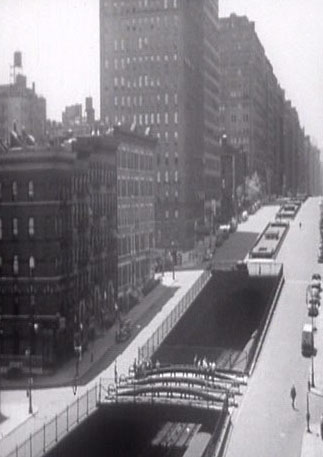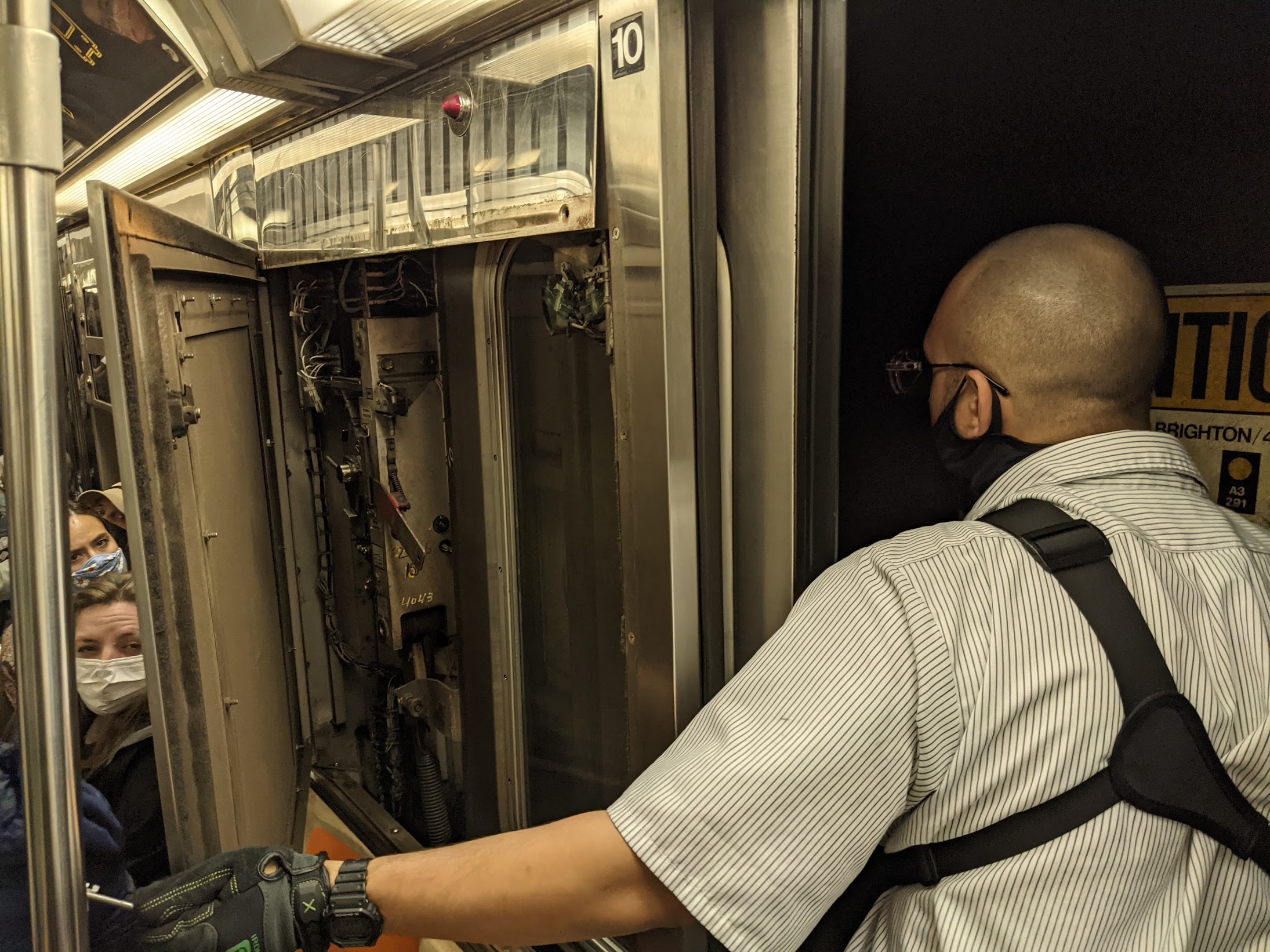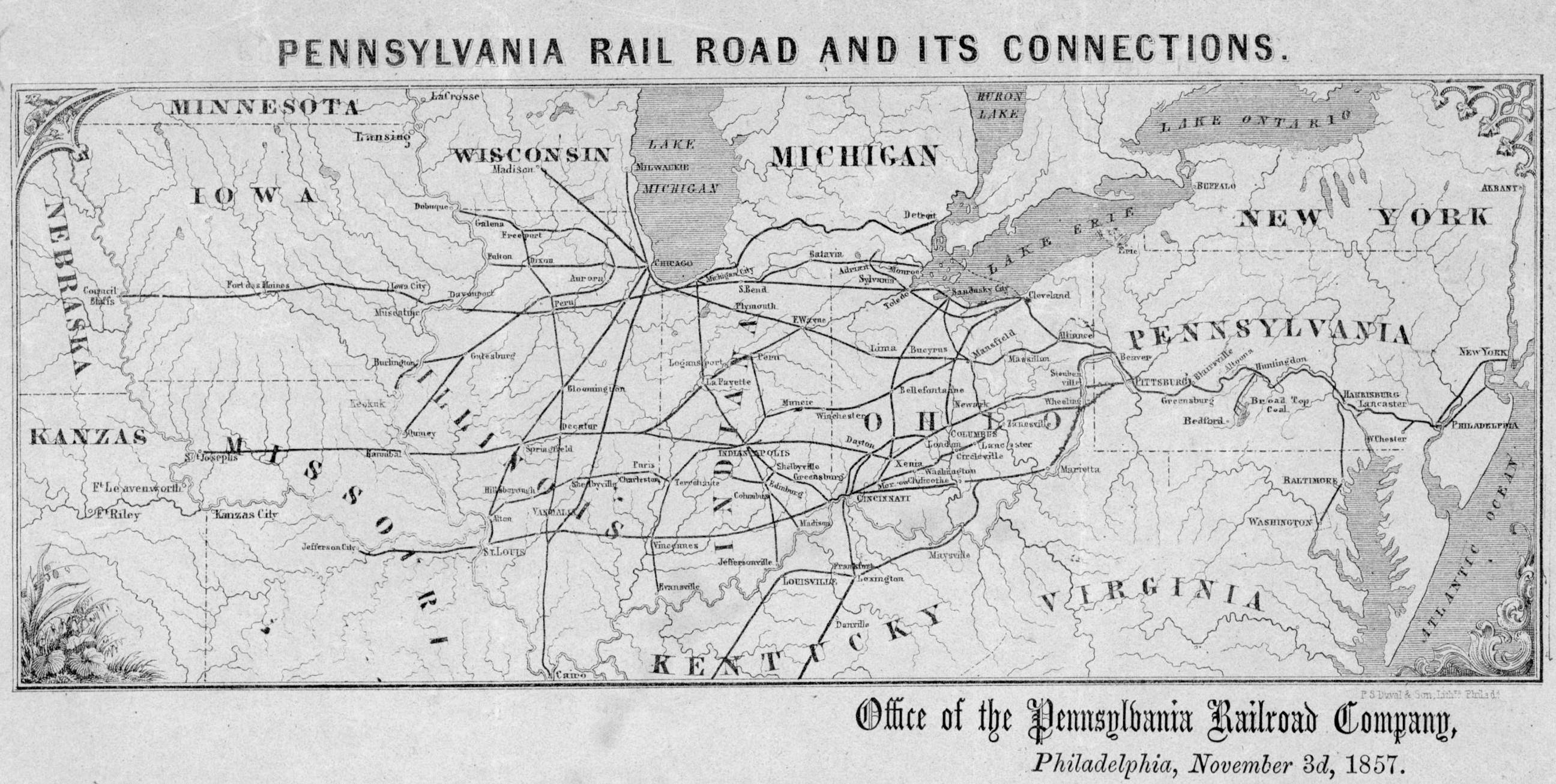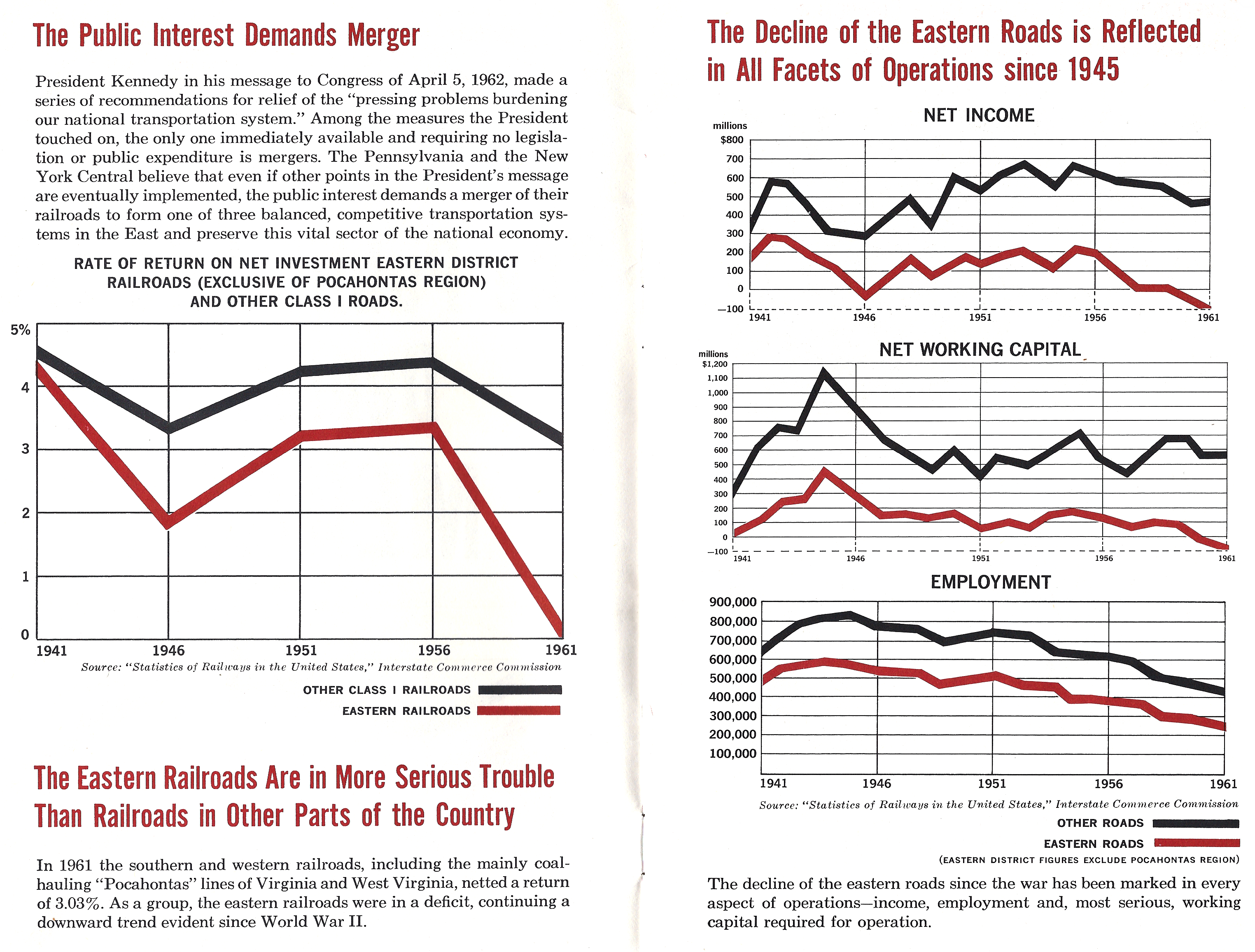|
Melrose (Metro-North Station)
Melrose station (also known as Melrose–East 162nd Street station) is a commuter rail stop on the Metro-North Railroad's Harlem Line, serving the Melrose neighborhood of the Bronx, New York City. It is located in an open cut beneath Park Avenue at its intersection with East 162nd Street. Since a major service increase that began as a pilot program in October 2016 and was made permanent in October 2017, train service at Melrose is similar in frequency to most Harlem Line stations, with trains stopping approximately every half-hour during rush hours and every hour all other times. In 2023, the northbound platform was made accessible in accordance with the Americans with Disabilities Act thanks to the construction of a ramp that leads from East 162nd Street to the north end of the platform. History Original station A station along the New York and Harlem Railroad in Melrose was known to exist as far back as 1841. When Melrose station was rebuilt by the New York Central Railroa ... [...More Info...] [...Related Items...] OR: [Wikipedia] [Google] [Baidu] [Amazon] |
Park Avenue
Park Avenue is a boulevard in New York City that carries north and southbound traffic in the borough (New York City), boroughs of Manhattan and the Bronx. For most of the road's length in Manhattan, it runs parallel to Madison Avenue to the west and Lexington Avenue (Manhattan), Lexington Avenue to the east. Park Avenue's entire length was formerly called Fourth Avenue; the title still applies to the section between Cooper Square and 14th Street (Manhattan), 14th Street. The avenue is called Union Square East between 14th and 17th Street (Manhattan), 17th streets, and Park Avenue South between 17th and 32nd Street (Manhattan), 32nd streets. History Early years and railroad construction Because of its designation as the widest avenue on Manhattan's East Side, Park Avenue originally carried the tracks of the New York and Harlem Railroad built in the 1830s, just a few years after the adoption of the Commissioners' Plan of 1811, Manhattan street grid. The railroad's Right-of-wa ... [...More Info...] [...Related Items...] OR: [Wikipedia] [Google] [Baidu] [Amazon] |
New York Central Railroad
The New York Central Railroad was a railroad primarily operating in the Great Lakes region, Great Lakes and Mid-Atlantic (United States), Mid-Atlantic regions of the United States. The railroad primarily connected New York metropolitan area, greater New York and Boston in the east with Chicago and St. Louis in the Midwest, along with the intermediate cities of Albany, New York, Albany, Buffalo, New York, Buffalo, Cleveland, Cincinnati, Detroit, Rochester, New York, Rochester and Syracuse, New York, Syracuse. The New York Central was headquartered in the New York Central Building, adjacent to its largest station, Grand Central Terminal. The railroad was established in 1853, consolidating several existing railroad companies. In 1968, the NYC merged with its former rival, the Pennsylvania Railroad, to form Penn Central. Penn Central went into bankruptcy in 1970 and, with extensive Federal government support, emerged as Conrail in 1976. In 1999, Conrail was broken up, and portions o ... [...More Info...] [...Related Items...] OR: [Wikipedia] [Google] [Baidu] [Amazon] |
Metro-North Railroad Stations In New York City
The Metro-North Commuter Railroad Company , also branded as MTA Metro-North Railroad and commonly called simply Metro-North, is a suburban commuter rail service operated by the Metropolitan Transportation Authority (MTA), a public authority of the U.S. state of New York. Metro-North serves the New York Metropolitan Area, running service between New York City and its northern suburbs in New York and Connecticut, including Port Jervis, Spring Valley, Poughkeepsie, Yonkers, New Rochelle, Mount Vernon, White Plains, Southeast and Wassaic in New York and Stamford, New Canaan, Danbury, Bridgeport, Waterbury, and New Haven in Connecticut. Service in Connecticut is operated under contract with the Connecticut Department of Transportation. Similarly, service on lines west of the Hudson River is operated under contract with NJ Transit. Metro-North also provides local rail service within the New York City boroughs of Manhattan and the Bronx. Metro-North is the descendant of commuter ... [...More Info...] [...Related Items...] OR: [Wikipedia] [Google] [Baidu] [Amazon] |
Port Morris Branch
Spuyten Duyvil and Port Morris Railroad was a railroad built in what is today the West Bronx and South Bronx in New York City, United States. It ran from the junction between the West Side Line and the Hudson River Railroad near Spuyten Duyvil Creek, then along the Harlem River to the northwestern shore of the East River in what is today the Port Morris section of the Bronx. History Waterfront section The Spuyten Duyvil and Port Morris Railroad was built in 1842, and bought by the New York and Harlem Railroad in 1853, as part of a proposal by NY&H Vice President Gouverneur Morris Jr. to integrate it into a new industrial section of the waterfront. In 1864, the entire NY&H including the SD&PM was acquired by the New York Central and Hudson River Railroad (NYC) and the segment north of Mott Haven Junction became part of the NYC Hudson Division, whereas the remaining Port Morris Branch continued its status as part of the Harlem Division. By 1871, it connected what became the New Yo ... [...More Info...] [...Related Items...] OR: [Wikipedia] [Google] [Baidu] [Amazon] |
Morrisania Air Rights
Morrisania Air Rights is a New York City Housing Authority (NYCHA) public housing project in Melrose and Morrisania, Bronx, consisting of three buildings, 19, 23, and 29 stories tall. There are 843 apartments housing some 1,952 residents. It was designed by the architectural firm The Eggers Partnership also known as Eggers & Higgins. Development The planning for the development began in 1971, but construction did not begin until the late 1970s. By purchasing the air rights above the Metro-North Railroad tracks (then Penn Central), the new housing project could be built without tearing down any buildings or displacing any residents both of which saved on costs and may be one of the reasons why NYCHA was able to build such a large project during a period when few public housing units were built, even in New York City.Weisman, Steven R"City Is Planning Housing Over Bronx Rail Tracks" ''The New York Times'', May 26, 1971. Accessed January 18, 2024. "The city announced plans yesterday ... [...More Info...] [...Related Items...] OR: [Wikipedia] [Google] [Baidu] [Amazon] |
New York City Housing Authority
The New York City Housing Authority (NYCHA) is a public development corporation which provides public housing in New York City, and is the largest public housing authority in North America. Created in 1934 as the first agency of its kind in the United States, it aims to provide decent, affordable housing for low- and moderate-income New Yorkers throughout the five boroughs of New York City. NYCHA also administers a citywide Section 8 (housing), Section 8 Leased Housing Program in rental apartments. NYCHA developments include single and double family houses, apartment units, singular floors, and shared small building units, and commonly have large income disparities with their respective surrounding neighborhood or community. These developments, particularly those including large-scale apartment buildings, are often referred to in popular culture as "projects." The New York City Housing Authority's goal is to increase opportunities for low- and moderate-income New Yorkers by prov ... [...More Info...] [...Related Items...] OR: [Wikipedia] [Google] [Baidu] [Amazon] |
161st Street (Bronx)
161st Street is a short, major thoroughfare in the southern portion of the Bronx. The road is long and is a much used access to Yankee Stadium on its north side. The 20th-century Yankee Stadium was on the south side of the street. The road begins in the west at an intersection with Jerome Avenue, a major thoroughfare in the Bronx, and Woodycrest Avenue, a one-way street in the Bronx. The road is one of the widest in the Bronx, until the Sheridan Avenue intersection, where the divided highway merges. East 161st Street ends at Elton Avenue. However, the road continues eastward in parts, ending at Hewitt Place, as a short connector. History East 161st Street was Cedar Street from the Harlem River to Grand Concourse. It was named after a property built in 1840 called "The Cedars". In the village of Melrose, East 161st was known as William Street. From Third Avenue to Prospect Avenue, East 161st Street was known as Grove Hill and was renamed later as Cliff Street. Descripti ... [...More Info...] [...Related Items...] OR: [Wikipedia] [Google] [Baidu] [Amazon] |
Yankee Stadium (1923)
The original Yankee Stadium was located in the Bronx in New York City. It was the home of the New York Yankees from 1923 New York Yankees season, 1923 to 2008 New York Yankees season, 2008, except for 1974 New York Yankees season, 1974–1975 New York Yankees season, 1975 when it was renovated. It hosted 6,581 Yankees regular season home games during its 85-year history. It was also the home of the New York Giants of the National Football League (NFL) from October 21, 1956 New York Giants season, 1956 through September 23, 1973 New York Giants season, 1973. The stadium's nickname is "The House That Ruth Built" which is derived from Babe Ruth, the baseball superstar whose prime years coincided with the stadium's opening and the beginning of the Yankees' winning history. The stadium was built from 1922 to 1923 for $2.4 million ($43 million in 2023 dollars). Its construction was paid for entirely by Yankees owner Jacob Ruppert, who was eager to have his own stadium after shari ... [...More Info...] [...Related Items...] OR: [Wikipedia] [Google] [Baidu] [Amazon] |
Fernando Ferrer
Fernando James Ferrer (born April 30, 1950) is an American politician who was the borough president of The Bronx from 1987 to 2001. Ferrer was a candidate for mayor of New York City in 1997 and 2001 and was the Democratic Party nominee for mayor in 2005, when he was defeated by Michael Bloomberg. Ferrer served on the New York City Council in the 1980s and has served as chairman and vice chairman of the Metropolitan Transportation Authority. Early life and education Ferrer grew up in the Longwood section of the South Bronx. He graduated from Catholic schools in the Bronx: St. Anselm Elementary School and Cardinal Spellman High School. Ferrer earned his B.A. degree from the University Heights Campus of New York University and his M.P.A. from Baruch College. Career New York City Council Ferrer represented the former 13 City Council district in the Bronx from 1982 to 1987. Ferrer authored legislation requiring interpreters in city emergency rooms. Ferrer went on to chair the ... [...More Info...] [...Related Items...] OR: [Wikipedia] [Google] [Baidu] [Amazon] |
Metropolitan Transportation Authority
The Metropolitan Transportation Authority (MTA) is a New York state public benefit corporations, public benefit corporation in New York (state), New York State responsible for public transportation in the New York metropolitan area, New York City metropolitan area. The MTA is the largest public transit authority in North America, serving 12 counties in Downstate New York, along with two counties in southwestern Connecticut under contract to the Connecticut Department of Transportation, carrying over 11 million passengers on an average weekday systemwide, and over 850,000 vehicles on its MTA Bridges and Tunnels, seven toll bridges and two tunnels per weekday. History Founding In February 1965, New York governor Nelson Rockefeller suggested that the New York State Legislature create an authority to purchase, operate, and modernize the Long Island Rail Road (LIRR). The LIRR, then a subsidiary of the Pennsylvania Railroad (PRR), had been operating under bankruptcy protection since 1 ... [...More Info...] [...Related Items...] OR: [Wikipedia] [Google] [Baidu] [Amazon] |
Pennsylvania Railroad
The Pennsylvania Railroad ( reporting mark PRR), legal name as the Pennsylvania Railroad Company, also known as the "Pennsy," was an American Class I railroad that was established in 1846 and headquartered in Philadelphia, Pennsylvania. At its peak in 1882, the Pennsylvania Railroad was the largest railroad (by traffic and revenue), the largest transportation enterprise, and the largest corporation in the world. Over its existence, Pennsylvania Railroad acquired, merged with, or owned part of at least 800 other rail lines and companies. At the end of 1926, it operated of rail line;This mileage includes companies independently operated. PRR miles of all tracks, which includes first (or main), second, third, fourth, and sidings, totalled 28,040.49 at the end of 1926. in the 1920s, it carried nearly three times the traffic as other railroads of comparable length, such as the Union Pacific and Atchison, Topeka & Santa Fe railroads. Its only formidable rival was the New York Centra ... [...More Info...] [...Related Items...] OR: [Wikipedia] [Google] [Baidu] [Amazon] |
Penn Central
The Penn Central Transportation Company, commonly abbreviated to Penn Central, was an American class I railroad that operated from 1968 to 1976. Penn Central combined three traditional corporate rivals, the Pennsylvania, New York Central and the New York, New Haven and Hartford railroad, each of which were united by large-scale service into the New York metropolitan area and to a lesser extent New England and Chicago. The new company failed barely two years after formation, the largest bankruptcy in U.S. history at the time. Penn Central's railroad assets were nationalized into Conrail along with those of other bankrupt northeastern railroads; its real estate and insurance holdings successfully reorganized into American Premier Underwriters. History Pre-merger The Penn Central railroad system developed in response to challenges facing northeastern American railroads during the late 1960s. While railroads elsewhere in North America drew revenues from long-distance shipment ... [...More Info...] [...Related Items...] OR: [Wikipedia] [Google] [Baidu] [Amazon] |






